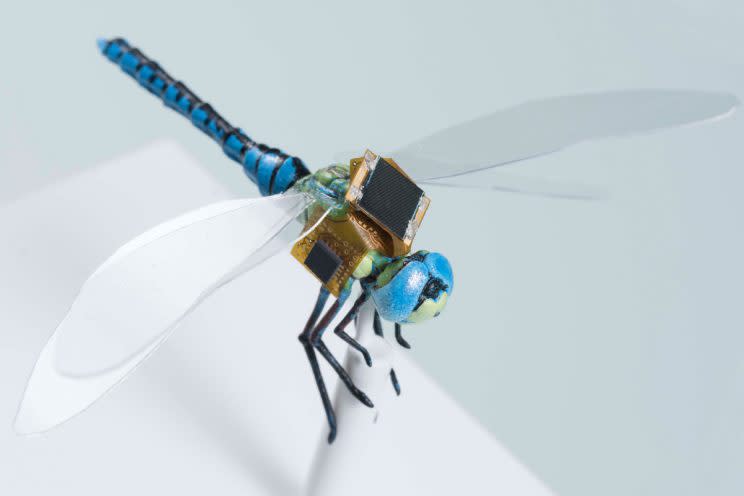Genetically modified cyborg dragonflies could be used as ‘biodrones’ for spying on people

A genetically modified cyborg dragonfly has been developed that can be controlled remotely and could be used for spying on people from the air.
The DragonflEye project involves a tiny backpack fitted with solar panels, that also relays steering commands from a controller on the ground.
In future, the hybrid drone could be used for reconnaissance missions or ‘guided pollinations’.

Created by biomedical research firm Draper in collaboration with Howard Hughes Medical Institute (HHMI) at Janelia Farm, the half-insect, half-machine uses optogenetic tech – which involves the use of light to control living cells.
The backpack-like device relays guidance commands from the ground to the dragonfly’s nerve cord in order to control its flight.
The researchers were able to make these neutrons sensitive to light by incorporating genes similar to those found in the eye.
“DragonflEye is a totally new kind of micro-aerial vehicle that’s smaller, lighter and stealthier than anything else that’s manmade,” said Jesse Wheeler, biomedical engineer at Draper and lead investigator on the project.
“This system pushes the boundaries of energy harvesting, motion sensing, algorithms, miniaturization and optogenetics, all in a system small enough for an insect to wear.”
MORE: Parts of the body are ‘still alive’ after you die, new study finds
MORE: Scientists create human-pig ‘chimera’ embryos in lab
While the tiny ‘biodrones’ could be used for surveillance, the technology could also be used benefit threatened species.
The researchers suggest that the struggling honeybee population could be fitted with the device to assist with pollination.

 Yahoo News
Yahoo News 

